-
EXECUTIVE SUMMARY
-
Market
-
Overview
-
Key Findings
-
Market Segmentation
-
Competitive
-
Landscape
-
Challenges and Opportunities
-
Future Outlook
-
\r\n
-
MARKET INTRODUCTION
-
Definition
-
Scope of the study
- Research Objective
- Assumption
- Limitations
-
RESEARCH METHODOLOGY
-
Overview
-
Data Mining
-
3.3.
-
Secondary Research
-
Primary Research
- Primary Interviews and
- Breakdown of Primary Respondents
-
Information Gathering Process
-
Forecasting Model
-
Market Size Estimation
- Bottom-Up
- Top-Down Approach
-
Approach
-
Data Triangulation
-
3.8.
-
Validation
-
\r\n
-
MARKET DYNAMICS
-
Overview
-
4.2.
-
Drivers
-
Restraints
-
Opportunities
-
MARKET FACTOR ANALYSIS
-
Value chain Analysis
-
Porter's Five Forces Analysis
- Bargaining Power of Buyers
- Threat of Substitutes
- Intensity
-
5.2.1.
-
Bargaining Power of Suppliers
-
5.2.3.
-
Threat of New Entrants
-
of Rivalry
-
COVID-19 Impact Analysis
- Market Impact Analysis
- Regional Impact
- Opportunity and Threat Analysis
-
\r\n
-
ALTERNATIVE SWEETENERS MARKET, BY TYPE (USD BILLION)
-
Natural
-
Sweeteners
-
Artificial Sweeteners
-
Sugar Alcohols
-
6.4.
-
High-Intensity Sweeteners
-
Traditional Sweeteners
-
ALTERNATIVE
-
SWEETENERS MARKET, BY APPLICATION (USD BILLION)
-
Food and Beverages
-
Pharmaceuticals
-
Cosmetics
-
Dietary Supplements
-
8.
-
ALTERNATIVE SWEETENERS MARKET, BY FORM (USD BILLION)
-
Liquid
-
8.2.
-
Powder
-
Granulated
-
Tablet
-
ALTERNATIVE SWEETENERS MARKET,
-
BY END USE (USD BILLION)
-
Household
-
Commercial
-
Food
-
Processing
-
Beverage Manufacturing
-
ALTERNATIVE SWEETENERS MARKET,
-
BY REGIONAL (USD BILLION)
-
North America
- US
-
10.1.2.
-
Canada
-
Europe
- Germany
- UK
- France
- Russia
- Italy
- Spain
- Rest
-
of Europe
-
APAC
- China
- India
- South Korea
- Malaysia
- Thailand
- Indonesia
- Rest of APAC
-
10.3.3.
-
Japan
-
South America
- Mexico
- Argentina
- Rest of South
-
10.4.1.
-
Brazil
-
America
-
MEA
- GCC Countries
- South Africa
- Rest of MEA
-
\r\n
-
COMPETITIVE LANDSCAPE
-
11.1.
-
Overview
-
Competitive Analysis
-
Market share Analysis
-
Major Growth Strategy in the Alternative Sweeteners Market
-
Competitive
-
Benchmarking
-
Leading Players in Terms of Number of Developments in the
-
Alternative Sweeteners Market
-
Key developments and growth strategies
- New Product Launch/Service Deployment
- Merger & Acquisitions
- Joint Ventures
-
Major Players Financial Matrix
- Major Players R&D Expenditure. 2023
-
11.8.1.
-
Sales and Operating Income
-
COMPANY PROFILES
-
Hawkins Watts
- Financial Overview
- Products Offered
- Key Developments
- SWOT
- Key Strategies
-
Analysis
-
Cargill
- Financial
- Products Offered
- Key Developments
- Key Strategies
-
Overview
-
12.2.4.
-
SWOT Analysis
-
Marmon Group
- Products Offered
- Key Developments
- SWOT Analysis
- Key Strategies
-
12.3.1.
-
Financial Overview
-
Dupont
- Financial Overview
- Products Offered
- Key Developments
- SWOT Analysis
- Key Strategies
-
Hershey
- Financial Overview
- Products Offered
- Key Developments
- SWOT Analysis
- Key Strategies
-
Tate &
- Financial Overview
- Products Offered
- SWOT Analysis
- Key Strategies
- Financial Overview
- Products Offered
- SWOT Analysis
- Key Strategies
- Financial Overview
- Products Offered
- Key Developments
- SWOT Analysis
- Key Strategies
-
Lyle
-
12.6.3.
-
Key Developments
-
12.7.
-
Frutarom
-
12.7.3.
-
Key Developments
-
12.8.
-
Sweeteners Plus
-
Mitsubishi Corporation
- Financial Overview
- Key Developments
- SWOT Analysis
- Key Strategies
-
12.9.2.
-
Products Offered
-
NutraSweet
- Financial Overview
- Products Offered
- Key Developments
- SWOT
- Key Strategies
-
Analysis
-
Ajinomoto
- Financial
- Products Offered
- Key Developments
- Key Strategies
-
Overview
-
12.11.4.
-
SWOT Analysis
-
Sensient Technologies
- Financial Overview
- Products Offered
- Key
- SWOT Analysis
- Key Strategies
- Financial Overview
- Products Offered
- Key Developments
- SWOT Analysis
- Key Strategies
-
Developments
-
12.13.
-
PureCircle
-
APPENDIX
-
References
-
Related Reports
-
LIST
-
OF TABLES
-
\r\nTABLE 1. LIST OF ASSUMPTIONS
-
NORTH AMERICA ALTERNATIVE
-
SWEETENERS MARKET SIZE ESTIMATES & FORECAST, BY TYPE, 2019-2035 (USD BILLIONS)
-
NORTH AMERICA ALTERNATIVE SWEETENERS MARKET SIZE ESTIMATES &
-
FORECAST, BY APPLICATION, 2019-2035 (USD BILLIONS)
-
NORTH AMERICA
-
ALTERNATIVE SWEETENERS MARKET SIZE ESTIMATES & FORECAST, BY FORM, 2019-2035
-
(USD BILLIONS)
-
NORTH AMERICA ALTERNATIVE SWEETENERS MARKET SIZE ESTIMATES
-
& FORECAST, BY END USE, 2019-2035 (USD BILLIONS)
-
NORTH AMERICA
-
ALTERNATIVE SWEETENERS MARKET SIZE ESTIMATES & FORECAST, BY REGIONAL, 2019-2035
-
(USD BILLIONS)
-
US ALTERNATIVE SWEETENERS MARKET SIZE ESTIMATES &
-
FORECAST, BY TYPE, 2019-2035 (USD BILLIONS)
-
US ALTERNATIVE SWEETENERS
-
MARKET SIZE ESTIMATES & FORECAST, BY APPLICATION, 2019-2035 (USD BILLIONS)
-
US ALTERNATIVE SWEETENERS MARKET SIZE ESTIMATES & FORECAST, BY FORM,
-
US ALTERNATIVE SWEETENERS MARKET SIZE ESTIMATES
-
& FORECAST, BY END USE, 2019-2035 (USD BILLIONS)
-
US ALTERNATIVE
-
SWEETENERS MARKET SIZE ESTIMATES & FORECAST, BY REGIONAL, 2019-2035 (USD BILLIONS)
-
CANADA ALTERNATIVE SWEETENERS MARKET SIZE ESTIMATES & FORECAST,
-
BY TYPE, 2019-2035 (USD BILLIONS)
-
CANADA ALTERNATIVE SWEETENERS
-
MARKET SIZE ESTIMATES & FORECAST, BY APPLICATION, 2019-2035 (USD BILLIONS)
-
CANADA ALTERNATIVE SWEETENERS MARKET SIZE ESTIMATES & FORECAST,
-
BY FORM, 2019-2035 (USD BILLIONS)
-
CANADA ALTERNATIVE SWEETENERS
-
MARKET SIZE ESTIMATES & FORECAST, BY END USE, 2019-2035 (USD BILLIONS)
-
TABLE
-
CANADA ALTERNATIVE SWEETENERS MARKET SIZE ESTIMATES & FORECAST, BY REGIONAL,
-
EUROPE ALTERNATIVE SWEETENERS MARKET SIZE
-
ESTIMATES & FORECAST, BY TYPE, 2019-2035 (USD BILLIONS)
-
EUROPE
-
ALTERNATIVE SWEETENERS MARKET SIZE ESTIMATES & FORECAST, BY APPLICATION, 2019-2035
-
(USD BILLIONS)
-
EUROPE ALTERNATIVE SWEETENERS MARKET SIZE ESTIMATES
-
& FORECAST, BY FORM, 2019-2035 (USD BILLIONS)
-
EUROPE ALTERNATIVE
-
SWEETENERS MARKET SIZE ESTIMATES & FORECAST, BY END USE, 2019-2035 (USD BILLIONS)
-
EUROPE ALTERNATIVE SWEETENERS MARKET SIZE ESTIMATES & FORECAST,
-
BY REGIONAL, 2019-2035 (USD BILLIONS)
-
GERMANY ALTERNATIVE SWEETENERS
-
MARKET SIZE ESTIMATES & FORECAST, BY TYPE, 2019-2035 (USD BILLIONS)
-
TABLE
-
GERMANY ALTERNATIVE SWEETENERS MARKET SIZE ESTIMATES & FORECAST, BY APPLICATION,
-
GERMANY ALTERNATIVE SWEETENERS MARKET SIZE
-
ESTIMATES & FORECAST, BY FORM, 2019-2035 (USD BILLIONS)
-
GERMANY
-
ALTERNATIVE SWEETENERS MARKET SIZE ESTIMATES & FORECAST, BY END USE, 2019-2035
-
(USD BILLIONS)
-
GERMANY ALTERNATIVE SWEETENERS MARKET SIZE ESTIMATES
-
& FORECAST, BY REGIONAL, 2019-2035 (USD BILLIONS)
-
UK ALTERNATIVE
-
SWEETENERS MARKET SIZE ESTIMATES & FORECAST, BY TYPE, 2019-2035 (USD BILLIONS)
-
UK ALTERNATIVE SWEETENERS MARKET SIZE ESTIMATES & FORECAST,
-
BY APPLICATION, 2019-2035 (USD BILLIONS)
-
UK ALTERNATIVE SWEETENERS
-
MARKET SIZE ESTIMATES & FORECAST, BY FORM, 2019-2035 (USD BILLIONS)
-
TABLE
-
UK ALTERNATIVE SWEETENERS MARKET SIZE ESTIMATES & FORECAST, BY END USE,
-
UK ALTERNATIVE SWEETENERS MARKET SIZE ESTIMATES
-
& FORECAST, BY REGIONAL, 2019-2035 (USD BILLIONS)
-
FRANCE ALTERNATIVE
-
SWEETENERS MARKET SIZE ESTIMATES & FORECAST, BY TYPE, 2019-2035 (USD BILLIONS)
-
FRANCE ALTERNATIVE SWEETENERS MARKET SIZE ESTIMATES & FORECAST,
-
BY APPLICATION, 2019-2035 (USD BILLIONS)
-
FRANCE ALTERNATIVE SWEETENERS
-
MARKET SIZE ESTIMATES & FORECAST, BY FORM, 2019-2035 (USD BILLIONS)
-
TABLE
-
FRANCE ALTERNATIVE SWEETENERS MARKET SIZE ESTIMATES & FORECAST, BY END USE,
-
FRANCE ALTERNATIVE SWEETENERS MARKET SIZE
-
ESTIMATES & FORECAST, BY REGIONAL, 2019-2035 (USD BILLIONS)
-
TABLE 37.
-
RUSSIA ALTERNATIVE SWEETENERS MARKET SIZE ESTIMATES & FORECAST, BY TYPE, 2019-2035
-
(USD BILLIONS)
-
RUSSIA ALTERNATIVE SWEETENERS MARKET SIZE ESTIMATES
-
& FORECAST, BY APPLICATION, 2019-2035 (USD BILLIONS)
-
RUSSIA
-
ALTERNATIVE SWEETENERS MARKET SIZE ESTIMATES & FORECAST, BY FORM, 2019-2035
-
(USD BILLIONS)
-
RUSSIA ALTERNATIVE SWEETENERS MARKET SIZE ESTIMATES
-
& FORECAST, BY END USE, 2019-2035 (USD BILLIONS)
-
RUSSIA ALTERNATIVE
-
SWEETENERS MARKET SIZE ESTIMATES & FORECAST, BY REGIONAL, 2019-2035 (USD BILLIONS)
-
ITALY ALTERNATIVE SWEETENERS MARKET SIZE ESTIMATES & FORECAST,
-
BY TYPE, 2019-2035 (USD BILLIONS)
-
ITALY ALTERNATIVE SWEETENERS MARKET
-
SIZE ESTIMATES & FORECAST, BY APPLICATION, 2019-2035 (USD BILLIONS)
-
TABLE
-
ITALY ALTERNATIVE SWEETENERS MARKET SIZE ESTIMATES & FORECAST, BY FORM,
-
ITALY ALTERNATIVE SWEETENERS MARKET SIZE
-
ESTIMATES & FORECAST, BY END USE, 2019-2035 (USD BILLIONS)
-
ITALY
-
ALTERNATIVE SWEETENERS MARKET SIZE ESTIMATES & FORECAST, BY REGIONAL, 2019-2035
-
(USD BILLIONS)
-
SPAIN ALTERNATIVE SWEETENERS MARKET SIZE ESTIMATES
-
& FORECAST, BY TYPE, 2019-2035 (USD BILLIONS)
-
SPAIN ALTERNATIVE
-
SWEETENERS MARKET SIZE ESTIMATES & FORECAST, BY APPLICATION, 2019-2035 (USD
-
BILLIONS)
-
SPAIN ALTERNATIVE SWEETENERS MARKET SIZE ESTIMATES &
-
FORECAST, BY FORM, 2019-2035 (USD BILLIONS)
-
SPAIN ALTERNATIVE SWEETENERS
-
MARKET SIZE ESTIMATES & FORECAST, BY END USE, 2019-2035 (USD BILLIONS)
-
TABLE
-
SPAIN ALTERNATIVE SWEETENERS MARKET SIZE ESTIMATES & FORECAST, BY REGIONAL,
-
REST OF EUROPE ALTERNATIVE SWEETENERS MARKET
-
SIZE ESTIMATES & FORECAST, BY TYPE, 2019-2035 (USD BILLIONS)
-
TABLE 53.
-
REST OF EUROPE ALTERNATIVE SWEETENERS MARKET SIZE ESTIMATES & FORECAST, BY APPLICATION,
-
REST OF EUROPE ALTERNATIVE SWEETENERS MARKET
-
SIZE ESTIMATES & FORECAST, BY FORM, 2019-2035 (USD BILLIONS)
-
TABLE 55.
-
REST OF EUROPE ALTERNATIVE SWEETENERS MARKET SIZE ESTIMATES & FORECAST, BY END
-
USE, 2019-2035 (USD BILLIONS)
-
REST OF EUROPE ALTERNATIVE SWEETENERS
-
MARKET SIZE ESTIMATES & FORECAST, BY REGIONAL, 2019-2035 (USD BILLIONS)
-
APAC ALTERNATIVE SWEETENERS MARKET SIZE ESTIMATES & FORECAST, BY
-
TYPE, 2019-2035 (USD BILLIONS)
-
APAC ALTERNATIVE SWEETENERS MARKET
-
SIZE ESTIMATES & FORECAST, BY APPLICATION, 2019-2035 (USD BILLIONS)
-
TABLE
-
APAC ALTERNATIVE SWEETENERS MARKET SIZE ESTIMATES & FORECAST, BY FORM, 2019-2035
-
(USD BILLIONS)
-
APAC ALTERNATIVE SWEETENERS MARKET SIZE ESTIMATES
-
& FORECAST, BY END USE, 2019-2035 (USD BILLIONS)
-
APAC ALTERNATIVE
-
SWEETENERS MARKET SIZE ESTIMATES & FORECAST, BY REGIONAL, 2019-2035 (USD BILLIONS)
-
CHINA ALTERNATIVE SWEETENERS MARKET SIZE ESTIMATES & FORECAST,
-
BY TYPE, 2019-2035 (USD BILLIONS)
-
CHINA ALTERNATIVE SWEETENERS MARKET
-
SIZE ESTIMATES & FORECAST, BY APPLICATION, 2019-2035 (USD BILLIONS)
-
TABLE
-
CHINA ALTERNATIVE SWEETENERS MARKET SIZE ESTIMATES & FORECAST, BY FORM,
-
CHINA ALTERNATIVE SWEETENERS MARKET SIZE
-
ESTIMATES & FORECAST, BY END USE, 2019-2035 (USD BILLIONS)
-
CHINA
-
ALTERNATIVE SWEETENERS MARKET SIZE ESTIMATES & FORECAST, BY REGIONAL, 2019-2035
-
(USD BILLIONS)
-
INDIA ALTERNATIVE SWEETENERS MARKET SIZE ESTIMATES
-
& FORECAST, BY TYPE, 2019-2035 (USD BILLIONS)
-
INDIA ALTERNATIVE
-
SWEETENERS MARKET SIZE ESTIMATES & FORECAST, BY APPLICATION, 2019-2035 (USD
-
BILLIONS)
-
INDIA ALTERNATIVE SWEETENERS MARKET SIZE ESTIMATES &
-
FORECAST, BY FORM, 2019-2035 (USD BILLIONS)
-
INDIA ALTERNATIVE SWEETENERS
-
MARKET SIZE ESTIMATES & FORECAST, BY END USE, 2019-2035 (USD BILLIONS)
-
TABLE
-
INDIA ALTERNATIVE SWEETENERS MARKET SIZE ESTIMATES & FORECAST, BY REGIONAL,
-
JAPAN ALTERNATIVE SWEETENERS MARKET SIZE
-
ESTIMATES & FORECAST, BY TYPE, 2019-2035 (USD BILLIONS)
-
JAPAN
-
ALTERNATIVE SWEETENERS MARKET SIZE ESTIMATES & FORECAST, BY APPLICATION, 2019-2035
-
(USD BILLIONS)
-
JAPAN ALTERNATIVE SWEETENERS MARKET SIZE ESTIMATES
-
& FORECAST, BY FORM, 2019-2035 (USD BILLIONS)
-
JAPAN ALTERNATIVE
-
SWEETENERS MARKET SIZE ESTIMATES & FORECAST, BY END USE, 2019-2035 (USD BILLIONS)
-
JAPAN ALTERNATIVE SWEETENERS MARKET SIZE ESTIMATES & FORECAST,
-
BY REGIONAL, 2019-2035 (USD BILLIONS)
-
SOUTH KOREA ALTERNATIVE SWEETENERS
-
MARKET SIZE ESTIMATES & FORECAST, BY TYPE, 2019-2035 (USD BILLIONS)
-
TABLE
-
SOUTH KOREA ALTERNATIVE SWEETENERS MARKET SIZE ESTIMATES & FORECAST, BY
-
APPLICATION, 2019-2035 (USD BILLIONS)
-
SOUTH KOREA ALTERNATIVE SWEETENERS
-
MARKET SIZE ESTIMATES & FORECAST, BY FORM, 2019-2035 (USD BILLIONS)
-
TABLE
-
SOUTH KOREA ALTERNATIVE SWEETENERS MARKET SIZE ESTIMATES & FORECAST, BY
-
END USE, 2019-2035 (USD BILLIONS)
-
SOUTH KOREA ALTERNATIVE SWEETENERS
-
MARKET SIZE ESTIMATES & FORECAST, BY REGIONAL, 2019-2035 (USD BILLIONS)
-
MALAYSIA ALTERNATIVE SWEETENERS MARKET SIZE ESTIMATES & FORECAST,
-
BY TYPE, 2019-2035 (USD BILLIONS)
-
MALAYSIA ALTERNATIVE SWEETENERS
-
MARKET SIZE ESTIMATES & FORECAST, BY APPLICATION, 2019-2035 (USD BILLIONS)
-
MALAYSIA ALTERNATIVE SWEETENERS MARKET SIZE ESTIMATES & FORECAST,
-
BY FORM, 2019-2035 (USD BILLIONS)
-
MALAYSIA ALTERNATIVE SWEETENERS
-
MARKET SIZE ESTIMATES & FORECAST, BY END USE, 2019-2035 (USD BILLIONS)
-
TABLE
-
MALAYSIA ALTERNATIVE SWEETENERS MARKET SIZE ESTIMATES & FORECAST, BY REGIONAL,
-
THAILAND ALTERNATIVE SWEETENERS MARKET
-
SIZE ESTIMATES & FORECAST, BY TYPE, 2019-2035 (USD BILLIONS)
-
TABLE 88.
-
THAILAND ALTERNATIVE SWEETENERS MARKET SIZE ESTIMATES & FORECAST, BY APPLICATION,
-
THAILAND ALTERNATIVE SWEETENERS MARKET
-
SIZE ESTIMATES & FORECAST, BY FORM, 2019-2035 (USD BILLIONS)
-
TABLE 90.
-
THAILAND ALTERNATIVE SWEETENERS MARKET SIZE ESTIMATES & FORECAST, BY END USE,
-
THAILAND ALTERNATIVE SWEETENERS MARKET
-
SIZE ESTIMATES & FORECAST, BY REGIONAL, 2019-2035 (USD BILLIONS)
-
TABLE
-
INDONESIA ALTERNATIVE SWEETENERS MARKET SIZE ESTIMATES & FORECAST, BY TYPE,
-
INDONESIA ALTERNATIVE SWEETENERS MARKET
-
SIZE ESTIMATES & FORECAST, BY APPLICATION, 2019-2035 (USD BILLIONS)
-
TABLE
-
INDONESIA ALTERNATIVE SWEETENERS MARKET SIZE ESTIMATES & FORECAST, BY FORM,
-
INDONESIA ALTERNATIVE SWEETENERS MARKET
-
SIZE ESTIMATES & FORECAST, BY END USE, 2019-2035 (USD BILLIONS)
-
TABLE
-
INDONESIA ALTERNATIVE SWEETENERS MARKET SIZE ESTIMATES & FORECAST, BY REGIONAL,
-
REST OF APAC ALTERNATIVE SWEETENERS MARKET
-
SIZE ESTIMATES & FORECAST, BY TYPE, 2019-2035 (USD BILLIONS)
-
TABLE 98.
-
REST OF APAC ALTERNATIVE SWEETENERS MARKET SIZE ESTIMATES & FORECAST, BY APPLICATION,
-
REST OF APAC ALTERNATIVE SWEETENERS MARKET
-
SIZE ESTIMATES & FORECAST, BY FORM, 2019-2035 (USD BILLIONS)
-
TABLE 100.
-
REST OF APAC ALTERNATIVE SWEETENERS MARKET SIZE ESTIMATES & FORECAST, BY END
-
USE, 2019-2035 (USD BILLIONS)
-
REST OF APAC ALTERNATIVE SWEETENERS
-
MARKET SIZE ESTIMATES & FORECAST, BY REGIONAL, 2019-2035 (USD BILLIONS)
-
SOUTH AMERICA ALTERNATIVE SWEETENERS MARKET SIZE ESTIMATES & FORECAST,
-
BY TYPE, 2019-2035 (USD BILLIONS)
-
SOUTH AMERICA ALTERNATIVE SWEETENERS
-
MARKET SIZE ESTIMATES & FORECAST, BY APPLICATION, 2019-2035 (USD BILLIONS)
-
SOUTH AMERICA ALTERNATIVE SWEETENERS MARKET SIZE ESTIMATES & FORECAST,
-
BY FORM, 2019-2035 (USD BILLIONS)
-
SOUTH AMERICA ALTERNATIVE SWEETENERS
-
MARKET SIZE ESTIMATES & FORECAST, BY END USE, 2019-2035 (USD BILLIONS)
-
TABLE
-
SOUTH AMERICA ALTERNATIVE SWEETENERS MARKET SIZE ESTIMATES & FORECAST,
-
BY REGIONAL, 2019-2035 (USD BILLIONS)
-
BRAZIL ALTERNATIVE SWEETENERS
-
MARKET SIZE ESTIMATES & FORECAST, BY TYPE, 2019-2035 (USD BILLIONS)
-
TABLE
-
BRAZIL ALTERNATIVE SWEETENERS MARKET SIZE ESTIMATES & FORECAST, BY APPLICATION,
-
BRAZIL ALTERNATIVE SWEETENERS MARKET SIZE
-
ESTIMATES & FORECAST, BY FORM, 2019-2035 (USD BILLIONS)
-
BRAZIL
-
ALTERNATIVE SWEETENERS MARKET SIZE ESTIMATES & FORECAST, BY END USE, 2019-2035
-
(USD BILLIONS)
-
BRAZIL ALTERNATIVE SWEETENERS MARKET SIZE ESTIMATES
-
& FORECAST, BY REGIONAL, 2019-2035 (USD BILLIONS)
-
MEXICO ALTERNATIVE
-
SWEETENERS MARKET SIZE ESTIMATES & FORECAST, BY TYPE, 2019-2035 (USD BILLIONS)
-
MEXICO ALTERNATIVE SWEETENERS MARKET SIZE ESTIMATES & FORECAST,
-
BY APPLICATION, 2019-2035 (USD BILLIONS)
-
MEXICO ALTERNATIVE SWEETENERS
-
MARKET SIZE ESTIMATES & FORECAST, BY FORM, 2019-2035 (USD BILLIONS)
-
TABLE
-
MEXICO ALTERNATIVE SWEETENERS MARKET SIZE ESTIMATES & FORECAST, BY END
-
USE, 2019-2035 (USD BILLIONS)
-
MEXICO ALTERNATIVE SWEETENERS MARKET
-
SIZE ESTIMATES & FORECAST, BY REGIONAL, 2019-2035 (USD BILLIONS)
-
TABLE
-
ARGENTINA ALTERNATIVE SWEETENERS MARKET SIZE ESTIMATES & FORECAST, BY TYPE,
-
ARGENTINA ALTERNATIVE SWEETENERS MARKET
-
SIZE ESTIMATES & FORECAST, BY APPLICATION, 2019-2035 (USD BILLIONS)
-
TABLE
-
ARGENTINA ALTERNATIVE SWEETENERS MARKET SIZE ESTIMATES & FORECAST, BY FORM,
-
ARGENTINA ALTERNATIVE SWEETENERS MARKET
-
SIZE ESTIMATES & FORECAST, BY END USE, 2019-2035 (USD BILLIONS)
-
TABLE
-
ARGENTINA ALTERNATIVE SWEETENERS MARKET SIZE ESTIMATES & FORECAST, BY REGIONAL,
-
REST OF SOUTH AMERICA ALTERNATIVE SWEETENERS
-
MARKET SIZE ESTIMATES & FORECAST, BY TYPE, 2019-2035 (USD BILLIONS)
-
TABLE
-
REST OF SOUTH AMERICA ALTERNATIVE SWEETENERS MARKET SIZE ESTIMATES & FORECAST,
-
BY APPLICATION, 2019-2035 (USD BILLIONS)
-
REST OF SOUTH AMERICA
-
ALTERNATIVE SWEETENERS MARKET SIZE ESTIMATES & FORECAST, BY FORM, 2019-2035
-
(USD BILLIONS)
-
REST OF SOUTH AMERICA ALTERNATIVE SWEETENERS MARKET
-
SIZE ESTIMATES & FORECAST, BY END USE, 2019-2035 (USD BILLIONS)
-
TABLE
-
REST OF SOUTH AMERICA ALTERNATIVE SWEETENERS MARKET SIZE ESTIMATES & FORECAST,
-
BY REGIONAL, 2019-2035 (USD BILLIONS)
-
MEA ALTERNATIVE SWEETENERS
-
MARKET SIZE ESTIMATES & FORECAST, BY TYPE, 2019-2035 (USD BILLIONS)
-
TABLE
-
MEA ALTERNATIVE SWEETENERS MARKET SIZE ESTIMATES & FORECAST, BY APPLICATION,
-
MEA ALTERNATIVE SWEETENERS MARKET SIZE
-
ESTIMATES & FORECAST, BY FORM, 2019-2035 (USD BILLIONS)
-
MEA
-
ALTERNATIVE SWEETENERS MARKET SIZE ESTIMATES & FORECAST, BY END USE, 2019-2035
-
(USD BILLIONS)
-
MEA ALTERNATIVE SWEETENERS MARKET SIZE ESTIMATES
-
& FORECAST, BY REGIONAL, 2019-2035 (USD BILLIONS)
-
GCC COUNTRIES
-
ALTERNATIVE SWEETENERS MARKET SIZE ESTIMATES & FORECAST, BY TYPE, 2019-2035
-
(USD BILLIONS)
-
GCC COUNTRIES ALTERNATIVE SWEETENERS MARKET SIZE
-
ESTIMATES & FORECAST, BY APPLICATION, 2019-2035 (USD BILLIONS)
-
TABLE 134.
-
GCC COUNTRIES ALTERNATIVE SWEETENERS MARKET SIZE ESTIMATES & FORECAST, BY FORM,
-
GCC COUNTRIES ALTERNATIVE SWEETENERS MARKET
-
SIZE ESTIMATES & FORECAST, BY END USE, 2019-2035 (USD BILLIONS)
-
TABLE
-
GCC COUNTRIES ALTERNATIVE SWEETENERS MARKET SIZE ESTIMATES & FORECAST,
-
BY REGIONAL, 2019-2035 (USD BILLIONS)
-
SOUTH AFRICA ALTERNATIVE
-
SWEETENERS MARKET SIZE ESTIMATES & FORECAST, BY TYPE, 2019-2035 (USD BILLIONS)
-
SOUTH AFRICA ALTERNATIVE SWEETENERS MARKET SIZE ESTIMATES &
-
FORECAST, BY APPLICATION, 2019-2035 (USD BILLIONS)
-
SOUTH AFRICA
-
ALTERNATIVE SWEETENERS MARKET SIZE ESTIMATES & FORECAST, BY FORM, 2019-2035
-
(USD BILLIONS)
-
SOUTH AFRICA ALTERNATIVE SWEETENERS MARKET SIZE
-
ESTIMATES & FORECAST, BY END USE, 2019-2035 (USD BILLIONS)
-
TABLE 141.
-
SOUTH AFRICA ALTERNATIVE SWEETENERS MARKET SIZE ESTIMATES & FORECAST, BY REGIONAL,
-
REST OF MEA ALTERNATIVE SWEETENERS MARKET
-
SIZE ESTIMATES & FORECAST, BY TYPE, 2019-2035 (USD BILLIONS)
-
TABLE 143.
-
REST OF MEA ALTERNATIVE SWEETENERS MARKET SIZE ESTIMATES & FORECAST, BY APPLICATION,
-
REST OF MEA ALTERNATIVE SWEETENERS MARKET
-
SIZE ESTIMATES & FORECAST, BY FORM, 2019-2035 (USD BILLIONS)
-
TABLE 145.
-
REST OF MEA ALTERNATIVE SWEETENERS MARKET SIZE ESTIMATES & FORECAST, BY END
-
USE, 2019-2035 (USD BILLIONS)
-
REST OF MEA ALTERNATIVE SWEETENERS
-
MARKET SIZE ESTIMATES & FORECAST, BY REGIONAL, 2019-2035 (USD BILLIONS)
-
PRODUCT LAUNCH/PRODUCT DEVELOPMENT/APPROVAL
-
ACQUISITION/PARTNERSHIP
-
\r\nLIST
-
OF FIGURES
-
\r\nFIGURE 1. MARKET SYNOPSIS
-
NORTH AMERICA ALTERNATIVE
-
SWEETENERS MARKET ANALYSIS
-
US ALTERNATIVE SWEETENERS MARKET ANALYSIS
-
BY TYPE
-
US ALTERNATIVE SWEETENERS MARKET ANALYSIS BY APPLICATION
-
US ALTERNATIVE SWEETENERS MARKET ANALYSIS BY FORM
-
FIGURE 6.
-
US ALTERNATIVE SWEETENERS MARKET ANALYSIS BY END USE
-
US ALTERNATIVE
-
SWEETENERS MARKET ANALYSIS BY REGIONAL
-
CANADA ALTERNATIVE SWEETENERS
-
MARKET ANALYSIS BY TYPE
-
CANADA ALTERNATIVE SWEETENERS MARKET ANALYSIS
-
BY APPLICATION
-
CANADA ALTERNATIVE SWEETENERS MARKET ANALYSIS BY
-
FORM
-
CANADA ALTERNATIVE SWEETENERS MARKET ANALYSIS BY END USE
-
CANADA ALTERNATIVE SWEETENERS MARKET ANALYSIS BY REGIONAL
-
FIGURE
-
EUROPE ALTERNATIVE SWEETENERS MARKET ANALYSIS
-
GERMANY ALTERNATIVE
-
SWEETENERS MARKET ANALYSIS BY TYPE
-
GERMANY ALTERNATIVE SWEETENERS
-
MARKET ANALYSIS BY APPLICATION
-
GERMANY ALTERNATIVE SWEETENERS MARKET
-
ANALYSIS BY FORM
-
GERMANY ALTERNATIVE SWEETENERS MARKET ANALYSIS
-
BY END USE
-
GERMANY ALTERNATIVE SWEETENERS MARKET ANALYSIS BY REGIONAL
-
UK ALTERNATIVE SWEETENERS MARKET ANALYSIS BY TYPE
-
FIGURE
-
UK ALTERNATIVE SWEETENERS MARKET ANALYSIS BY APPLICATION
-
UK
-
ALTERNATIVE SWEETENERS MARKET ANALYSIS BY FORM
-
UK ALTERNATIVE SWEETENERS
-
MARKET ANALYSIS BY END USE
-
UK ALTERNATIVE SWEETENERS MARKET ANALYSIS
-
BY REGIONAL
-
FRANCE ALTERNATIVE SWEETENERS MARKET ANALYSIS BY TYPE
-
FRANCE ALTERNATIVE SWEETENERS MARKET ANALYSIS BY APPLICATION
-
FRANCE ALTERNATIVE SWEETENERS MARKET ANALYSIS BY FORM
-
FIGURE
-
FRANCE ALTERNATIVE SWEETENERS MARKET ANALYSIS BY END USE
-
FRANCE
-
ALTERNATIVE SWEETENERS MARKET ANALYSIS BY REGIONAL
-
RUSSIA ALTERNATIVE
-
SWEETENERS MARKET ANALYSIS BY TYPE
-
RUSSIA ALTERNATIVE SWEETENERS
-
MARKET ANALYSIS BY APPLICATION
-
RUSSIA ALTERNATIVE SWEETENERS MARKET
-
ANALYSIS BY FORM
-
RUSSIA ALTERNATIVE SWEETENERS MARKET ANALYSIS
-
BY END USE
-
RUSSIA ALTERNATIVE SWEETENERS MARKET ANALYSIS BY REGIONAL
-
ITALY ALTERNATIVE SWEETENERS MARKET ANALYSIS BY TYPE
-
FIGURE
-
ITALY ALTERNATIVE SWEETENERS MARKET ANALYSIS BY APPLICATION
-
FIGURE 36.
-
ITALY ALTERNATIVE SWEETENERS MARKET ANALYSIS BY FORM
-
ITALY ALTERNATIVE
-
SWEETENERS MARKET ANALYSIS BY END USE
-
ITALY ALTERNATIVE SWEETENERS
-
MARKET ANALYSIS BY REGIONAL
-
SPAIN ALTERNATIVE SWEETENERS MARKET
-
ANALYSIS BY TYPE
-
SPAIN ALTERNATIVE SWEETENERS MARKET ANALYSIS BY
-
APPLICATION
-
SPAIN ALTERNATIVE SWEETENERS MARKET ANALYSIS BY FORM
-
SPAIN ALTERNATIVE SWEETENERS MARKET ANALYSIS BY END USE
-
FIGURE
-
SPAIN ALTERNATIVE SWEETENERS MARKET ANALYSIS BY REGIONAL
-
REST
-
OF EUROPE ALTERNATIVE SWEETENERS MARKET ANALYSIS BY TYPE
-
REST OF
-
EUROPE ALTERNATIVE SWEETENERS MARKET ANALYSIS BY APPLICATION
-
REST
-
OF EUROPE ALTERNATIVE SWEETENERS MARKET ANALYSIS BY FORM
-
REST OF
-
EUROPE ALTERNATIVE SWEETENERS MARKET ANALYSIS BY END USE
-
REST OF
-
EUROPE ALTERNATIVE SWEETENERS MARKET ANALYSIS BY REGIONAL
-
APAC
-
ALTERNATIVE SWEETENERS MARKET ANALYSIS
-
CHINA ALTERNATIVE SWEETENERS
-
MARKET ANALYSIS BY TYPE
-
CHINA ALTERNATIVE SWEETENERS MARKET ANALYSIS
-
BY APPLICATION
-
CHINA ALTERNATIVE SWEETENERS MARKET ANALYSIS BY
-
FORM
-
CHINA ALTERNATIVE SWEETENERS MARKET ANALYSIS BY END USE
-
CHINA ALTERNATIVE SWEETENERS MARKET ANALYSIS BY REGIONAL
-
FIGURE
-
INDIA ALTERNATIVE SWEETENERS MARKET ANALYSIS BY TYPE
-
INDIA
-
ALTERNATIVE SWEETENERS MARKET ANALYSIS BY APPLICATION
-
INDIA ALTERNATIVE
-
SWEETENERS MARKET ANALYSIS BY FORM
-
INDIA ALTERNATIVE SWEETENERS
-
MARKET ANALYSIS BY END USE
-
INDIA ALTERNATIVE SWEETENERS MARKET
-
ANALYSIS BY REGIONAL
-
JAPAN ALTERNATIVE SWEETENERS MARKET ANALYSIS
-
BY TYPE
-
JAPAN ALTERNATIVE SWEETENERS MARKET ANALYSIS BY APPLICATION
-
JAPAN ALTERNATIVE SWEETENERS MARKET ANALYSIS BY FORM
-
FIGURE
-
JAPAN ALTERNATIVE SWEETENERS MARKET ANALYSIS BY END USE
-
JAPAN
-
ALTERNATIVE SWEETENERS MARKET ANALYSIS BY REGIONAL
-
SOUTH KOREA
-
ALTERNATIVE SWEETENERS MARKET ANALYSIS BY TYPE
-
SOUTH KOREA ALTERNATIVE
-
SWEETENERS MARKET ANALYSIS BY APPLICATION
-
SOUTH KOREA ALTERNATIVE
-
SWEETENERS MARKET ANALYSIS BY FORM
-
SOUTH KOREA ALTERNATIVE SWEETENERS
-
MARKET ANALYSIS BY END USE
-
SOUTH KOREA ALTERNATIVE SWEETENERS MARKET
-
ANALYSIS BY REGIONAL
-
MALAYSIA ALTERNATIVE SWEETENERS MARKET ANALYSIS
-
BY TYPE
-
MALAYSIA ALTERNATIVE SWEETENERS MARKET ANALYSIS BY APPLICATION
-
MALAYSIA ALTERNATIVE SWEETENERS MARKET ANALYSIS BY FORM
-
FIGURE
-
MALAYSIA ALTERNATIVE SWEETENERS MARKET ANALYSIS BY END USE
-
FIGURE 74.
-
MALAYSIA ALTERNATIVE SWEETENERS MARKET ANALYSIS BY REGIONAL
-
THAILAND
-
ALTERNATIVE SWEETENERS MARKET ANALYSIS BY TYPE
-
THAILAND ALTERNATIVE
-
SWEETENERS MARKET ANALYSIS BY APPLICATION
-
THAILAND ALTERNATIVE
-
SWEETENERS MARKET ANALYSIS BY FORM
-
THAILAND ALTERNATIVE SWEETENERS
-
MARKET ANALYSIS BY END USE
-
THAILAND ALTERNATIVE SWEETENERS MARKET
-
ANALYSIS BY REGIONAL
-
INDONESIA ALTERNATIVE SWEETENERS MARKET ANALYSIS
-
BY TYPE
-
INDONESIA ALTERNATIVE SWEETENERS MARKET ANALYSIS BY APPLICATION
-
INDONESIA ALTERNATIVE SWEETENERS MARKET ANALYSIS BY FORM
-
FIGURE
-
INDONESIA ALTERNATIVE SWEETENERS MARKET ANALYSIS BY END USE
-
FIGURE 84.
-
INDONESIA ALTERNATIVE SWEETENERS MARKET ANALYSIS BY REGIONAL
-
REST
-
OF APAC ALTERNATIVE SWEETENERS MARKET ANALYSIS BY TYPE
-
REST OF
-
APAC ALTERNATIVE SWEETENERS MARKET ANALYSIS BY APPLICATION
-
REST
-
OF APAC ALTERNATIVE SWEETENERS MARKET ANALYSIS BY FORM
-
REST OF
-
APAC ALTERNATIVE SWEETENERS MARKET ANALYSIS BY END USE
-
REST OF
-
APAC ALTERNATIVE SWEETENERS MARKET ANALYSIS BY REGIONAL
-
SOUTH AMERICA
-
ALTERNATIVE SWEETENERS MARKET ANALYSIS
-
BRAZIL ALTERNATIVE SWEETENERS
-
MARKET ANALYSIS BY TYPE
-
BRAZIL ALTERNATIVE SWEETENERS MARKET ANALYSIS
-
BY APPLICATION
-
BRAZIL ALTERNATIVE SWEETENERS MARKET ANALYSIS BY
-
FORM
-
BRAZIL ALTERNATIVE SWEETENERS MARKET ANALYSIS BY END USE
-
BRAZIL ALTERNATIVE SWEETENERS MARKET ANALYSIS BY REGIONAL
-
FIGURE
-
MEXICO ALTERNATIVE SWEETENERS MARKET ANALYSIS BY TYPE
-
MEXICO
-
ALTERNATIVE SWEETENERS MARKET ANALYSIS BY APPLICATION
-
MEXICO ALTERNATIVE
-
SWEETENERS MARKET ANALYSIS BY FORM
-
MEXICO ALTERNATIVE SWEETENERS
-
MARKET ANALYSIS BY END USE
-
MEXICO ALTERNATIVE SWEETENERS MARKET
-
ANALYSIS BY REGIONAL
-
ARGENTINA ALTERNATIVE SWEETENERS MARKET ANALYSIS
-
BY TYPE
-
ARGENTINA ALTERNATIVE SWEETENERS MARKET ANALYSIS BY APPLICATION
-
ARGENTINA ALTERNATIVE SWEETENERS MARKET ANALYSIS BY FORM
-
FIGURE
-
ARGENTINA ALTERNATIVE SWEETENERS MARKET ANALYSIS BY END USE
-
FIGURE 105.
-
ARGENTINA ALTERNATIVE SWEETENERS MARKET ANALYSIS BY REGIONAL
-
REST
-
OF SOUTH AMERICA ALTERNATIVE SWEETENERS MARKET ANALYSIS BY TYPE
-
FIGURE 107.
-
REST OF SOUTH AMERICA ALTERNATIVE SWEETENERS MARKET ANALYSIS BY APPLICATION
-
REST OF SOUTH AMERICA ALTERNATIVE SWEETENERS MARKET ANALYSIS BY FORM
-
REST OF SOUTH AMERICA ALTERNATIVE SWEETENERS MARKET ANALYSIS BY
-
END USE
-
REST OF SOUTH AMERICA ALTERNATIVE SWEETENERS MARKET ANALYSIS
-
BY REGIONAL
-
MEA ALTERNATIVE SWEETENERS MARKET ANALYSIS
-
FIGURE
-
GCC COUNTRIES ALTERNATIVE SWEETENERS MARKET ANALYSIS BY TYPE
-
FIGURE 113.
-
GCC COUNTRIES ALTERNATIVE SWEETENERS MARKET ANALYSIS BY APPLICATION
-
FIGURE
-
GCC COUNTRIES ALTERNATIVE SWEETENERS MARKET ANALYSIS BY FORM
-
FIGURE 115.
-
GCC COUNTRIES ALTERNATIVE SWEETENERS MARKET ANALYSIS BY END USE
-
FIGURE 116.
-
GCC COUNTRIES ALTERNATIVE SWEETENERS MARKET ANALYSIS BY REGIONAL
-
FIGURE 117.
-
SOUTH AFRICA ALTERNATIVE SWEETENERS MARKET ANALYSIS BY TYPE
-
SOUTH
-
AFRICA ALTERNATIVE SWEETENERS MARKET ANALYSIS BY APPLICATION
-
SOUTH
-
AFRICA ALTERNATIVE SWEETENERS MARKET ANALYSIS BY FORM
-
SOUTH AFRICA
-
ALTERNATIVE SWEETENERS MARKET ANALYSIS BY END USE
-
SOUTH AFRICA
-
ALTERNATIVE SWEETENERS MARKET ANALYSIS BY REGIONAL
-
REST OF MEA
-
ALTERNATIVE SWEETENERS MARKET ANALYSIS BY TYPE
-
REST OF MEA ALTERNATIVE
-
SWEETENERS MARKET ANALYSIS BY APPLICATION
-
REST OF MEA ALTERNATIVE
-
SWEETENERS MARKET ANALYSIS BY FORM
-
REST OF MEA ALTERNATIVE SWEETENERS
-
MARKET ANALYSIS BY END USE
-
REST OF MEA ALTERNATIVE SWEETENERS
-
MARKET ANALYSIS BY REGIONAL
-
KEY BUYING CRITERIA OF ALTERNATIVE
-
SWEETENERS MARKET
-
RESEARCH PROCESS OF MRFR
-
DRO
-
ANALYSIS OF ALTERNATIVE SWEETENERS MARKET
-
DRIVERS IMPACT ANALYSIS:
-
ALTERNATIVE SWEETENERS MARKET
-
RESTRAINTS IMPACT ANALYSIS: ALTERNATIVE
-
SWEETENERS MARKET
-
SUPPLY / VALUE CHAIN: ALTERNATIVE SWEETENERS
-
MARKET
-
ALTERNATIVE SWEETENERS MARKET, BY TYPE, 2025 (% SHARE)
-
ALTERNATIVE SWEETENERS MARKET, BY TYPE, 2019 TO 2035 (USD Billions)
-
ALTERNATIVE SWEETENERS MARKET, BY APPLICATION, 2025 (% SHARE)
-
ALTERNATIVE SWEETENERS MARKET, BY APPLICATION, 2019 TO 2035 (USD
-
Billions)
-
ALTERNATIVE SWEETENERS MARKET, BY FORM, 2025 (% SHARE)
-
ALTERNATIVE SWEETENERS MARKET, BY FORM, 2019 TO 2035 (USD Billions)
-
ALTERNATIVE SWEETENERS MARKET, BY END USE, 2025 (% SHARE)
-
ALTERNATIVE SWEETENERS MARKET, BY END USE, 2019 TO 2035 (USD Billions)
-
ALTERNATIVE SWEETENERS MARKET, BY REGIONAL, 2025 (% SHARE)
-
ALTERNATIVE SWEETENERS MARKET, BY REGIONAL, 2019 TO 2035 (USD Billions)
-
BENCHMARKING OF MAJOR COMPETITORS
-
\r\n

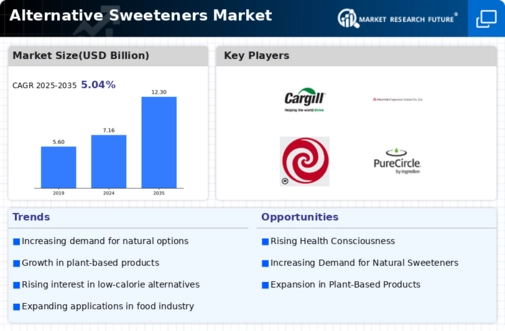
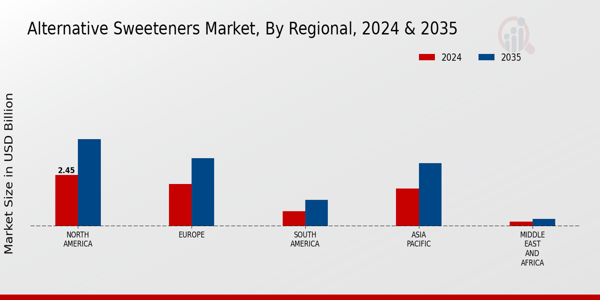
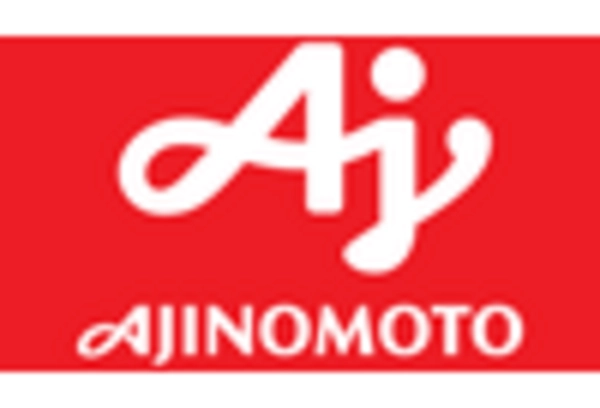
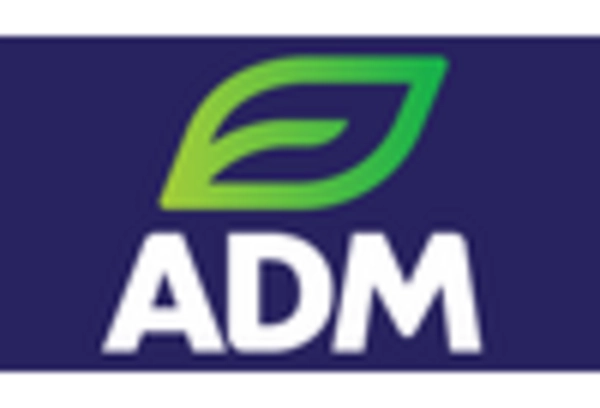



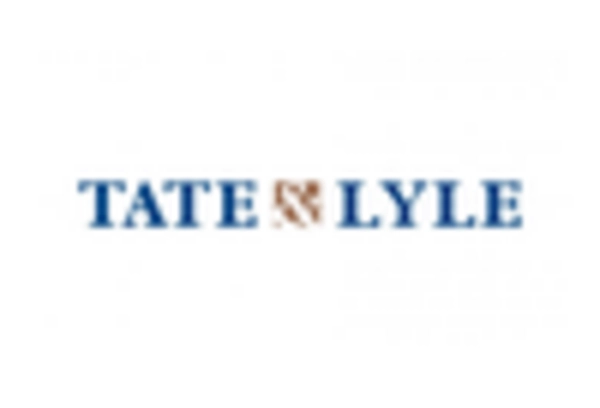

Leave a Comment